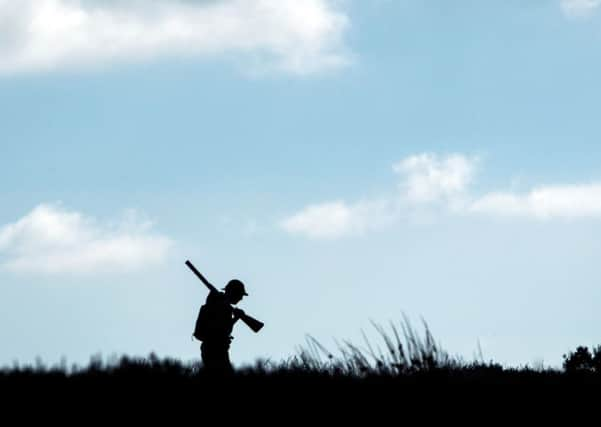Craig Whittaker: Banning grouse hunting would not prevent floods


As a townie, I thought I needed to go and visit the estate and consider what influence the management of the estate has upon the mitigation of flood risk. I have to tell you that what I saw horrified me. Actually, I felt quite sick, and not because I saw anything repugnant – quite the opposite.
I quickly realised that much of the information peddled around the Calder Valley about the estate are, in many cases, simply untrue and based more on ideology than on fact and reason.
Advertisement
Hide AdAdvertisement
Hide AdIt is true that our peatland moors are in a poor state, but that is not because of grouse shooting. Rather, it is a consequence of a number of different factors, not least decades of abuse from coal burning and the over-intensification of farming.
So why am I horrified about the amount of misinformation, which is quite frankly breathtaking, relating to the Walshaw Estate? Does the estate slash and burn, as is suggested by many? No, it does not. It does, however, use what is called cool burning. The estate works in partnership with Natural England, Yorkshire Water and many other agencies. Everything it does is done under licence and is strictly controlled and plotted by GPS, and mapped, so that no area is burnt out of cycle, which, for active peat, is over 25 years, and, for other areas, is over 20 and 15 years.
Does this contribute to the increased peak flows? Common sense would probably say that it does; as does a study completed by Durham University and commissioned by Treesponsibility in the Calder Valley.
Although the study shows that burning does indeed have an impact on flows – I say “flows”, and not “flooding” – its methodology is so inherently flawed by a number of omissions and inaccurate assumptions that it is of very limited value.
Advertisement
Hide AdAdvertisement
Hide AdFor example, the author of the study does not take into consideration any other burning outside the Walshaw Estate. The author assumes that all channels on the moorland are unimpeded and allow the free flow of water; grips, ditches and drains are ignored.
We know that water does not have an unimpeded flow. There are thousands of acres around the Calder Valley that are up hill and down dale and that have thousands of natural traps and bungs. On top of that, our reservoirs are not always storage neutral. Indeed, managing the level of reservoirs can have a significant impact upon mitigating the risk of flooding. Owing to the significant proportion of water on the moorlands that runs through the six reservoirs on and around the Estate, if the levels of the reservoirs had been proactively managed last winter, the scale of the destruction caused to the communities in the valley bottom may have been reduced. Ironically, going into this winter, many of our reservoirs are kept low or empty.
As a result of a variety of factors, including the use of cool burning, mechanical cutting and spraying, and the planting of mixtures of new seeds of heather and cotton grass replacement, we have seen a huge influx of bird species back on to the moor. I was fortunate to see some of those species during my recent visit. This evidence is contrary to a petition which states that grouse shooting exterminates wildlife. The careful custodianship of our moorlands is actually supporting and encouraging wildlife in a way that we have not previously seen.
I point out that it is already illegal to kill endangered species. Banning grouse shooting will have no influence on this practice; policing of the law that is in place will. Furthermore, it has been alleged that the grouse moors practise “gripping”, which is designed to drain the moor to encourage heather growth and that that, in turn, has contributed to flooding.
Advertisement
Hide AdAdvertisement
Hide AdThe opposite is true. The Walshaw Estate has practised grip blocking over the last three years. That practice blocks grips that were paid for by the Government in the 1970s to encourage more intensive farming. Over a third of grips have been blocked at Walshaw and the work to completely block the rest will take place over the next 18 months.
Finally, it is worth drawing attention to the very substantial cost of the restoration work and moorland maintenance programme. The seven full-time gamekeepers who carry out the vast amount of restoration work are on constant lookout in the summer for wildfires, which can totally destroy the peat. Were they not there and were the estate not to have grouse shooting, there would be no capacity to prevent the wildfires.
Where do we go from here? In common with organisations such as the Royal Society for the Protection of Birds, I do not think that banning driven grouse shooting is the answer.
However, we have to remember that if the current owners of our moors did not carry out the scale of restoration that they currently do, our moorlands would be in significantly worse condition than they are. I do not think that banning driven grouse shooting is the answer – in fact, it would be a sledgehammer to crack a nut – and as far as flood measures go, it would actually be detrimental. Common sense, not ideology, should prevail.
Craig Whittaker is the Tory MP for Calder Valley who spoke in a Parliamentary debate on grouse shooting. This is an edited version.